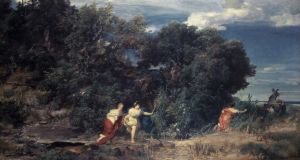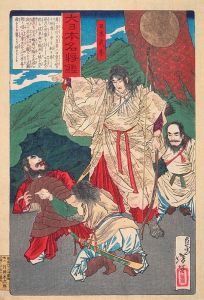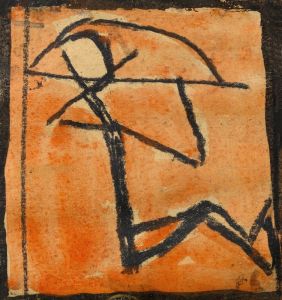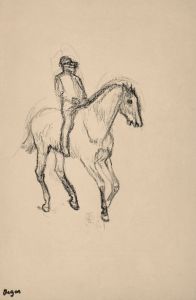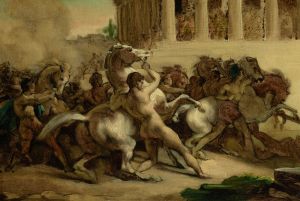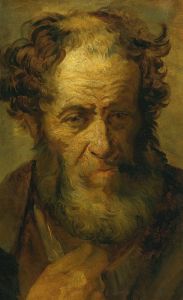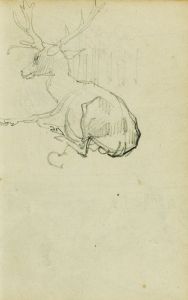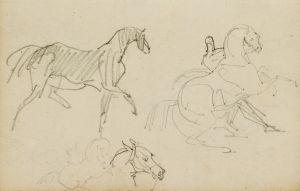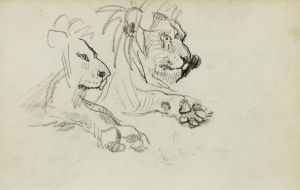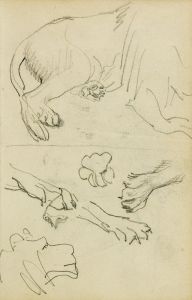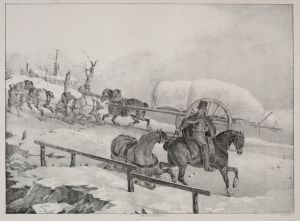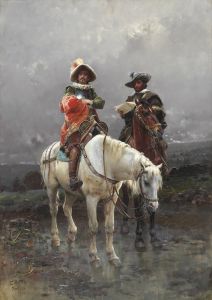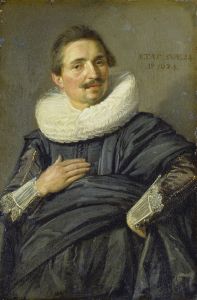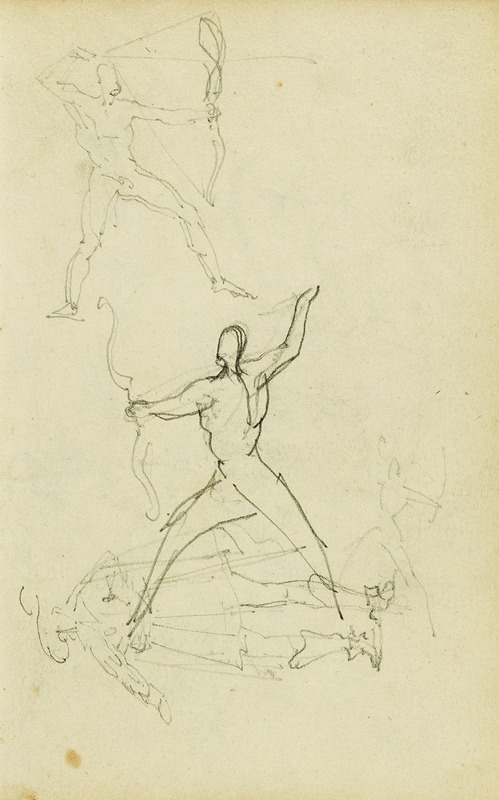
Three studies of a nude man with bow and arrow, standing cavalier
A hand-painted replica of Théodore Géricault’s masterpiece Three studies of a nude man with bow and arrow, standing cavalier, meticulously crafted by professional artists to capture the true essence of the original. Each piece is created with museum-quality canvas and rare mineral pigments, carefully painted by experienced artists with delicate brushstrokes and rich, layered colors to perfectly recreate the texture of the original artwork. Unlike machine-printed reproductions, this hand-painted version brings the painting to life, infused with the artist’s emotions and skill in every stroke. Whether for personal collection or home decoration, it instantly elevates the artistic atmosphere of any space.
Théodore Géricault, a prominent French painter and lithographer, is best known for his influential works during the Romantic period. His oeuvre includes a variety of subjects, ranging from dramatic historical scenes to intimate studies of the human form. One of his lesser-known works is "Three Studies of a Nude Man with Bow and Arrow, Standing Cavalier." This piece exemplifies Géricault's keen interest in the human anatomy and his skill in capturing dynamic poses.
Géricault was born in Rouen, France, in 1791 and showed an early interest in art. He moved to Paris to study under renowned artists such as Pierre-Narcisse Guérin and was heavily influenced by the works of Michelangelo and Peter Paul Rubens. Géricault's fascination with the human body is evident in many of his works, where he often explored themes of physicality and movement.
"Three Studies of a Nude Man with Bow and Arrow, Standing Cavalier" is a testament to Géricault's dedication to anatomical precision and his ability to convey the tension and grace of the human form. This piece likely served as a study for a larger composition or as an exercise in understanding the complexities of musculature and posture. The artwork features a nude male figure in three different poses, each holding a bow and arrow, showcasing Géricault's interest in classical themes and his ability to depict the human body in motion.
The choice of a bow and arrow as props in the study may suggest an exploration of themes related to classical mythology or heroism, common subjects in Romantic art. However, without additional context or documentation, the specific inspiration or intended narrative behind this study remains unclear. What is evident, though, is Géricault's meticulous attention to detail and his skillful rendering of the human form, which reflects his academic training and his admiration for the masters of the Renaissance.
Géricault's career, though tragically short due to his untimely death at the age of 32, left a significant impact on the art world. His most famous work, "The Raft of the Medusa," is celebrated for its dramatic intensity and emotional depth, characteristics that can also be seen in his studies and sketches. "Three Studies of a Nude Man with Bow and Arrow, Standing Cavalier" fits within this broader context of Géricault's work, highlighting his continuous exploration of human emotion and physicality.
While this particular study may not be as widely recognized as some of his other works, it provides valuable insight into Géricault's artistic process and his commitment to mastering the depiction of the human body. It serves as a reminder of the artist's skill and his contribution to the Romantic movement, which emphasized emotion, individualism, and the sublime aspects of nature and humanity.
In summary, "Three Studies of a Nude Man with Bow and Arrow, Standing Cavalier" is a compelling example of Théodore Géricault's exploration of the human form and his ability to capture the essence of movement and tension. Through this study, Géricault continues to be celebrated for his technical prowess and his enduring influence on the art world.





